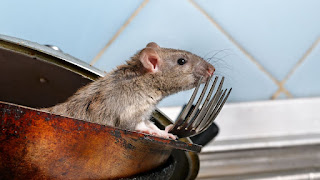Animals that Start with B - Listed With Pictures, Facts
How Much Does Raccoon Removal Cost?
Aside from the actual removal of the raccoons, there are other factors that will affect the final cost of the job.
InspectionIf you only suspect you might have raccoons, or it's unclear how many are wreaking havoc on your property, you'll need to hire a pest control expert to come for an inspection. This will likely cost you around $100 and give you an idea of the extent of your problem, how much damage has already been sustained and whether there are any other special circumstances that will affect removal, such as the presence of babies or a nest.
Location of the RaccoonWhile you might not relish the thought of raccoons running amok in your backyard, it is easier for them to be captured if they are already out in the open. It will cost you around $200 to $300 to do them, and you'll need to spend some time and money making sure your yard is secure for next time.
However, raccoons are often found in attics, on roofs and even in chimneys. These locations are harder to access, and therefore you'll be charged more for raccoon removal:
You might think your raccoon problem has come to a sad conclusion, but you must still act quickly even though the deceased animal can no longer actively forage or build a nest.
Any dead animal can attract other animals, so this could just be the beginning of your pest problems if you're not careful. The odor of decay could also affect your space. Worst of all, the deceased raccoon might have been carrying a disease, which could pose a health hazard to any humans or animals that comes in contact with it. It will cost approximately $250 to remove each dead raccoon from your premises.
Nest Removal and Clean UpIt might very well be that you only need the raccoon to be evicted from your property, especially if you got to it early enough. However, if the raccoon was around for any amount of time, it might have left some parting gifts that you do not want to keep around.
If there's a nest, it will need to be removed manually, usually at a cost of $500 per nest. If there is feces or any other mess left behind, cleaning and sanitizing the affected area will cost between $200 and $500. Raccoons carry various germs and diseases, so this is necessary to avoid any health hazards to humans, pets, and other animals.
Home RepairsIn addition to the mess, the raccoons might have caused serious damage to your property, especially if you found them in the roof or attic. The price tag for repairs will depend on the extent of the damage. If you now have structural issues because of a raccoon building a nest, it's worth checking your homeowner's policy to see if pest-related damage is involved.
If you think you could receive a visit from a raccoon again in the future, contact your insurance provider to discuss options.
Houston Animal Abuse: 18 Dogs Removed From Deplorable Living Conditions
HOUSTON - The Houston Humane Society assisted in the removal of 18 dogs from deplorable living conditions over the weekend, according to a release.
Officials said six of the dogs are now receiving treatment while the other 12 dogs are with BARC.
SUGGESTED: Houston gas prices: How have they changed in last week since Feb. 20
Houston Humane Society officials said the dogs' owner was being evicted from her Houston-area home when the Houston Police Department stepped in and convinced her to surrender the dogs so they could be taken to a clean, safe environment and receive proper care.
The animals were later removed by Humane Society officials.
Officials stated the owner of the dogs will not face any charges.
FOX 26 Houston is now on the FOX LOCAL app available through Apple TV, Amazon FireTV, Roku, Google Android TV, and Vizio!
Houston Humane Society officials said they are also currently out of room and are in desparate need of families or individuals looking to adopt or fosters looking to temporarily open their homes to vulnerable animals that need extra time, love, and care to create more space for homeless pets, which helps save more lives.
If you would like to adopt or foster, you can click here.
Are Wild Horses Being Taken Too Young? Inauspicious Start To Mustang Removal Raises Questions About Animal Welfare
Kat Ballou, a rust-colored filly with a blazed face and blonde mane, was a cautious but curious animal, and the youngest member of a uniquely tight knit band within the McCullough Peaks wild horse herd. She was a momma's girl with an unassuming spunk.
Her band, comprising three generations of mares, were all notably close, but Ballou had an extra tight kinship with her 22-year-old great grandmother, a look-alike sorrel named Totem. Though separated by three generations, they shared an uncanny manner and likeness: Same paint-splashed faces and honey-colored locks, mutually inseparable on the range.
"Horses really do have close familial ties. Especially with youngsters and especially between the mares. They were all in the band together but great-grandma, Totem, really likes babies because she is always with them. And always with Ballou. Every second," said Sandy Sisti, a wild horse advocate who was with the herd on the snowy day of Ballou's birth on Dec. 26, 2022.
People are also reading…
"Kat Ballou was so cute and lively, and very attached to her mom. It was her mom's first baby. She was always with her family, always with her mama and great grandma."
They were never seen apart. Until the evening of Jan. 23.
The night was relatively warm and windless. A gibbous moon bathed the rolling sagebrush landscape. The silhouette of the Absaroka Mountains rose in the distance. Here, just off Whistle Creek Road in Park County, Kat Ballou and nine other mustangs meandered into a corral-paneled trap, where a Bureau of Land Management (BLM) staffer quietly locked the gate behind them.
It would mark the first removal in the BLM's ongoing McCullough Peaks wild horse bait-trap gather, which aims to curtail the herd by 40 horses–around 22% of its current total. The plan was officialized in the fall of 2023, and is meant to achieve multiple-use ecosystem balance in the McCullough Peaks Wilderness Study Area required by the 2015 Cody Resource Management Plan.
That night, at the trap off Whistle Creek Road, an agency horse expert examined the animals and selected "highly adoptable" specimens for removal — four total: two yearlings, including 13-month old Kat Ballou, and two foals under six months, scarcely weaned and now without their mothers. They were put on a trailer and taken to a temporary holding pen in Cody. In the morning they'd be transported to a long-term facility in Rock Springs where officials would prepare them for adoption.
But Kat Ballou would never make it that far: She was found dead in the Cody corral the next morning.
Staffers overseeing the transport declined to speak with reporters. But a necropsy report obtained by the Star-Tribune describes the filly's condition when she was found:
"Heavy abrasions extending nearly through the dermis on forehead between eyes down to mid-nose."; "There are marks in the dirt directly where she laid making it appear as if she was "paddling" at the time of death."
This lead to the conjecture that:
"[Ballou] was running in the pen and tried to stop but slid into the fence post causing Traumatic Brain Injury leading to death. The marks in the dirt immediately around P (patient) fit with normal movements post death by trauma."; "...Everything is pointing towards head trauma as the cause of death."
In response to the death, the agency conducted a self-evaluation against its Comprehensive Animal Welfare Program (CAWP), a set of guidelines designed to ensure the ethical collection of mustangs. The CAWP standards address things like permissible temperatures, holding pen conditions, and in the case of helicopter roundups the speed at which horses can be driven.
Its internal review confirmed that all CAWP standards were followed. And officials say that the event came as a shock because the four mustangs were calmly behaved throughout the process.
"Those horses that we removed were calm on and off the trailer. In the temporary holding corral they were calm, and they were eating and drinking. That's why it was so unexpected," said Sarah Beckwith, information officer with the BLM Wind River District.
For the agency, the event is a mournful reminder that despite the herd's atypical human exposure as one of the most visited wild horse herds in the state, they are still undomesticated and unpredictable.
"It's such a sad situation. Everyone [at BLM] feels it's a sad situation. However, it's always a possibility when you're working with wild animals that something like this can happen," Beckwith said.
Wild horse activists, however, believe the death was avoidable, and that the mistake was an error of common sense. The CAWP states that horses should not be left unobserved for more than 12 hours. In the case of Kat Ballou, 12 hours was too much time.
"Anyone that knows anything about horses would never have taken a four-month-old, a five-month-old, and yearlings away from their mothers and left them unattended and observed overnight. It's just a recipe for disaster," said Carol Walker, an advocate who's covered the McCullough Peaks herd on her podcast Wild Hoofbeats. "Kat Ballou was probably trying to get back to her mother and she broke her neck. You can call it an accident, but I call it gross negligence."
It's also true that the CAWP is merely a guideline, meaning it has no legal bearing, and it can be discretionarily applied. This is most clear when considering the vague threshold of when a foal is said to be weaned, or capable of making it without mother's milk.
The CAWP states that "Mares/jennies and their dependent foals must not be separated unless for safe transport." But some advocates question if the gather is prematurely removing dependent foals. The two youngest McCullough Peaks horses — named Sky Dancer and Bandero, four and five months old, respectively — were nursing every 30-60 minutes during the week of their capture, according to Sandy Sisti, who was out amongst the herd in the days leading up.
It highlights a central dilemma faced by herd managers across the West. The BLM's ultimate aim, after all, is to curtail the herd while still providing horses a chance for a life elsewhere. To this end experience confirms that the younger the mustangs are the more likely their shot of adoption.
"Our wild horse specialist is primarily looking for horses that are highly adoptable, so he's going to target horses that are under five years old," said Beckwith.
Of course, the difference between a 5-year-old and a 5-month-old is significant. But then again, the difference in their chances at adoption may be significant, too.
Get local news delivered to your inbox!
Zakary SonntagEnergy Reporter
Follow Zakary SonntagYour notification has been saved.
There was a problem saving your notification.
{{description}}
Email notifications are only sent once a day, and only if there are new matching items.
Please log in to use this feature Log In


Comments
Post a Comment